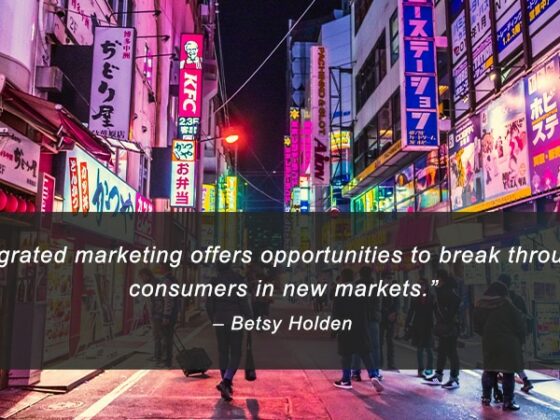In our first conversation about the Metaverse with Simone Puorto, one of the most prominent Web3 specialists for the hospitality and travel industry, Simone eloquently explained the true definition of the Metaverse and the possibilities and challenges that go along with this nascent technology. Below, we bring you the second part of our interview, where Simone discusses how hoteliers can further leverage and explore the uses of the Metaverse in their everyday work.
The Metaverse is just the logical evolution of the internet. For example, previously, we cited how making reservations started from a paper catalog and then moved to online booking platforms and will, eventually, be done on the Metaverse. The same can be said about the internet. At first, the only thing you could do with a website was to look at it, or, if you were enough of a geek, you could maybe create a page yourself with Microsoft FrontPage, but there was a huge disconnection between the user and the web. We had to enter the internet, unplug the telephone to plug in a 56k modem, and so on, whereas now, with IoT and everything, we never really have to connect to the internet; we are always on it.
And this is an excellent analogy between the internet and the Metaverse, as now we need to do something to get into the Metaverse (be it putting on a VR headset, AR glasses, or using our phones for some mixed reality operation), but we envision it as being almost an afterthought, something we don’t even talk about, and that is always connected. Right now, the state of things is essentially VR versus AR or the Facebook way versus the Apple way, but at some point, we will just step up to XR devices that will allow us to get into both VR and AR gateways to a level that we can’t even think about today. And remember that these are just terms we create because the technology is still clunky to a certain extent. So we can say that we’ll be on the Metaverse when we won’t need to go into the Metaverse.
- We’ll be on the Metaverse when we won’t need to go into the Metaverse.
- New ways of analyzing the impact of Metaverse solutions are needed, as some of our current processes, such as the attribution model, which relies on concatenation, work differently on the Metaverse.
- NFTs can be used to create value for the brand and cut out middlemen. They are ways of creating additional, independent revenue streams.
- Hotels will need to create unique experiences that can’t be replicated physically.
- Privacy and security will be critical, requiring hotels to protect guest information and offer secure transactions, using new technologies and processes.
Taking booking as an example, the most prominent problem hotels have today, especially the independent ones, is a low rate of direct revenue. With commission costs high, most of my clients want to find a way to increase booking on their BE, which is usually a very frustrating experience for the guest. Frankly speaking, the process makes no sense, mainly since, during the pandemic, everyone got used to paying with a single swipe, and nobody wants to enter credit card data into a messy system that, design-wise, is different for each property. The Metaverse could create a graphic interface where you go into the room you like, whenever you want, and just blink it to make a booking, rather than going through the entire process of entering information. In a perfect world, this would be connected to your digital wallet, but, even in the worst-case scenario, it would be connected to your credit card anyhow, still removing all the friction when it comes to booking direct.
Today, most booking engines don’t have a Metaverse solution yet or charge insane rates for it. But this is common; as the number of companies offering the service increases, solutions will become more affordable and available, just as it was with the web and its services. Think how previously a hotel could have a website, but bookings were only possible via phone call or by sending an email to the property. It was just a brochure that evolved into e-commerce. The Metaverse can now be compared to a late ’90s website, where we’re building a digital twin for the property but can’t offer booking capabilities yet.
And bringing the challenge further, how would we analyze the impact of that way of booking? The attribution models we have now depend on the customer or guest journey that can, at least to a certain extent, be followed, but how can we use this model on the Metaverse if we don’t have a straightforward way to track actions? That’s a complicated problem that not many people consider, but there are more and more companies looking into that and trying to create a connection between “tangible” life and life in virtual or augmented reality.
Lastly, a current problem with technology will also need to be addressed: The integration between systems. If all the hotels in the world use just one PMS, it would be pretty simple to connect it to the Metaverse, but the reality is that we’re dealing with probably thousands of systems, so you see how it gets complicated. Solving this problem would help reduce the friction of the purchase. And speaking of this, payments on the Metaverse are also much more seamless due to the sense of urgency. You don’t have the option to place a room on your basket in the booking engine and come back later; instead, you’ll be inside that room with, let’s say, five other avatars, and you will hear them saying things such as “I really love this room, let’s book it!” creating an immediate need for action and potentially increasing spending.
Owning a Quest or other gear to access the Metaverse is only one small part of its environment, so businesses won’t depend solely on their customers having these devices. Instead, a cheaper entry point could be using realistic, immersive virtual reality experiences that can be achieved both in VR and 2D. A company called Xplorit does just that, building virtual tours and allowing users to interact with places of interest.
Some functions will need more interaction than others, naturally. In the case of a MICE event planner, having an immersive experience of a meeting room at a hotel abroad, where it wouldn’t have otherwise been possible to visit before the event, gives them better confidence to sign a contract. Experiencing the lighting in the room, the layout, and planning the use of the space down to the details is better than simply receiving a floor plan of the venue as we do today. Whereas when booking a room, interaction is not necessarily a top priority, as you won’t be able to feel the softness of the mattress (at least not yet), and moving a pillow around won’t make a difference – those are cases when realism is essential, but not so much the interaction aspect.
A less realistic version of a hotel, somewhat more gamified, could be a marketing stunt that appeals to specific, younger, crypto, and metaverse-native audiences and could also work if you are having an event inside the Metaverse rather than using it as a digital twin aimed at replicating the experience more accurately.
FURTHER READING:
So, in general, there are two different approaches, depending on the level of realism and interaction needed. But, as I see it, when you have more realism, you want more interaction, and with our current computational power and average connection, it will not happen very soon.
My suggestion is always the same: start with something you don’t have in real life. If you want a cool Metaverse project, go crazy with it and don’t focus on just creating a virtual copy of what you have (because you’ve been doing that from day one, with physical brochures, photos on the website, and so on). For example, let’s say you’re an independent hotel whose USP is a historical villa with decor from the 1600s. Make sure to create something that supplements the hotel experience or an extension, like an NFT gallery with your paintings that can be toured or bought as digital copies. Make the project self-sustaining, for example by selling crypto art, so it is an added stream of revenue that can be used to build even more spaces in tangible or digital life. It’s a way to add something you cannot or cannot have in real life and make additional money.
What are some advantages of NFTs?
The good thing about NFTs is that there is no middleman. So you can create, buy, and sell everything online and still create value for your property or brand, as opposed to some third party whose model is merely to resell stuff like concert tickets on the parallel market – it doesn’t generate value for the venue nor the artist, but only for that middle man.
What we can do with rooms sold as NFTs is to include a, let’s call it, a commission so that every time that room moves around, the hotel will still have part of that revenue. Another advantage is that, with wallets being semi-anonymous, guests can buy things like room NFTs and get into a brand’s loyalty program, but they just receive cool items in their wallets like a complimentary welcome drink, a gamification approach to a contest, and more, instead of newsletters or an annoying email. So with NFT, you can stay in touch with the community without needing personal data.
NFTs also replace the need for trust with truth, where there is no way to lie about, for example, a room night you’ve booked in Beverly Hills – it will be there, on your wallet, and is undeniable, unlike our social networks today where you could put up a green screen and make a post to flex about it. NFTs can’t be hacked; they are there on the blockchain and will be forever.






